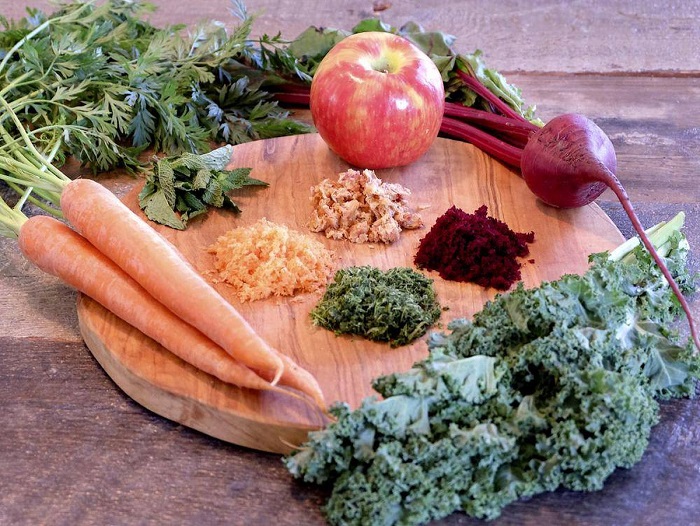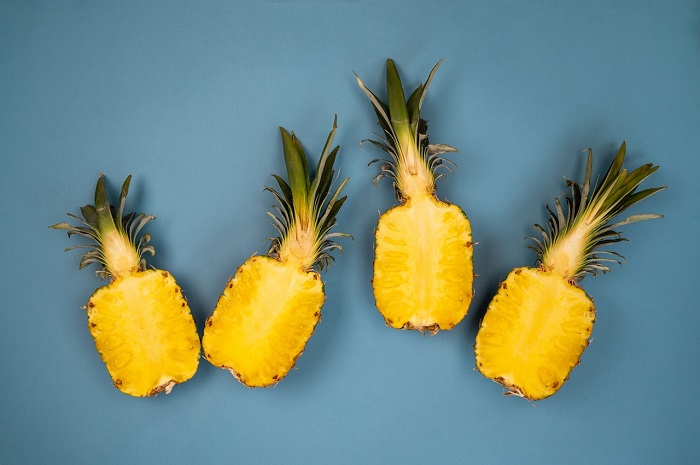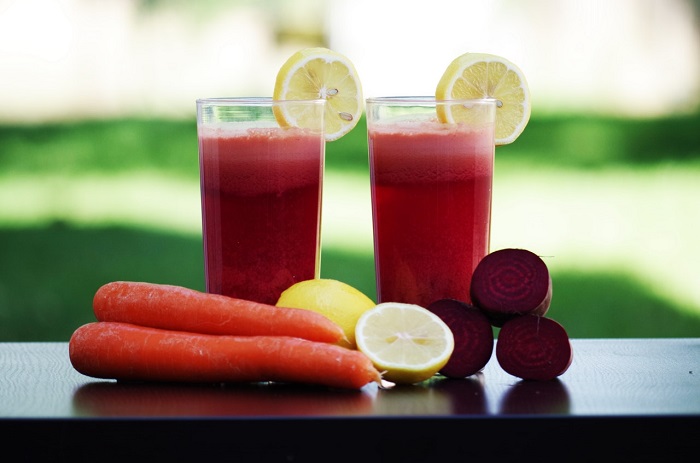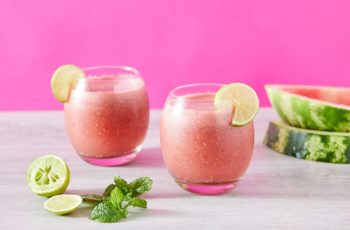Table of Contents
Is Pulp Good for You? Good Tips and Guides in 2021
Pulp is made up of the fiber, water, and juice that remains after food has been squeezed or pressed to remove its liquid. Many people ask the question: “Is pulp good for you?” This article will answer that question and more. It includes tips on how to make your own juices with pulp and guides to juice recipes.
The article also covers why you should drink fresh juices and what types of juicers work best for different needs. Lastly, it tells you where some great places are to find high-quality produce near you! In addition, there is a section about all the benefits of drinking fresh juice as well as some great recipes. There is even a section dedicated specifically to those who want their kids or themselves on a low sugar diet!

1. What is pulp?
Pulp is made up of the fiber, water, and juice that remains after food has been squeezed or pressed to remove its liquid. When making juices and smoothies (which will be talked about later), it is usually a good idea to leave some pulp in for added fiber and respiratory health benefits. However, if you do not want any left-overs at all then simply use a cheesecloth as your strainer!
2. Is Pulp Good For You: The Benefits of Pulp
2.1. Helps Protect Digestion and Assimilation:
One benefit of pulp is that it can help protect against digestive issues such as constipation, diarrhea, gastroenteritis, Crohn’s disease, ulcerative colitis, diverticulosis and irritable bowel syndrome. In addition to this, pulp has shown infinite ability to enhance assimilation by providing ample amounts of prebiotics which are necessary for proper digestion and nutrient absorption.
2.2. Helps with Weight Loss:
Pulp can help with weight loss because of its ability to fill you up and give you energy while leaving you “full.”
2.3. High in Fiber:
Pulp is high in fiber and helps activate the intestinal tract and digestive system by increasing healthy gut flora populations. The more fibers we eat, the better our digestion becomes. Also, it is important to remember that juicing allows for a higher concentration of enzymes and vitamins than we would get while eating whole fruits or vegetables due to their liquid content.
Because pulp is juice without water, all these substances are still intact but in a concentrated form which results in increased health benefits! In addition, pulp contains both soluble and insoluble fiber- two extremely beneficial fibers that help slow down the breakdown of carbohydrates in the body.
Studies have shown that diets high in fiber can reduce blood cholesterol levels and lower risk for heart disease, diabetes, obesity and certain cancers. Fiber also helps keep you regular by aiding digestion.
Pulp is very beneficial for your health due to it being high in antioxidants, soluble fiber and prebiotics which are some of the elements needed to increase healthy gut flora populations, decrease blood cholesterol levels and nourish our bodies on a cellular level while speeding up metabolism!
Prebiotics are non-digestible food ingredients (such as dietary fibers) that deliver benefits similar to those provided by probiotics without actually containing any live microbes. Like probiotics, they support digestive health through several modes of action, namely boosting the growth of beneficial gut bacteria, supporting digestive health through their prebiotic functions and improving digestion.
For example, fiber is a prebiotic which helps us to maintain our healthy gut flora populations by nourishing our good bacteria. What’s more, studies show that consuming fiber also improves insulin sensitivity and reduces cholesterol levels in the blood- both mechanisms that help prevent type 2 diabetes and cardiovascular diseases.
Above information can answer the question Is pulp Good for You? Let’s see some tips and guides on using pulp as below:
3. What are benefits of Juicing?
3.1. Get More Nutrients:
When you juice your fruits and vegetables, you are maximizing the amount of nutrients that can be absorbed into your body which is great for people who require more health-boosting nutrients in their diet!
It has been shown that people who consume 100% raw juices receive proper nutrition without requiring further supplements. Plus, juicing helps purify the lymphatic system by removing toxins from the liver!
3.2. Puts You on a High Raw Diet:
Drinking fresh fruit or vegetable juices means you are giving your digestive system a rest since it doesn’t have to work as hard to break down all those fibers and enzymes in whole fruits and vegetables- this allows our bodies to function more efficiently and clear out bacteria in the gut.
In fact, according to the Hippocrates Health Institute, a raw diet gives your cells a break from being processed and eliminated which allows for their regeneration.
3.3. Quick and Easy:
Juicing is the quickest way to get more fruits and vegetables in your body- all you have to do is blend or juice! Plus, fruit juices are tasty so it’s easy to get kids excited about drinking them!
3.4. Prevents Disease:
Research has shown that people who meet or exceed five servings of fresh produce per day reduce the risk of cardiovascular disease by nearly 40%, cancer rates decrease by 13% and they can even increase life expectancy by several years!
Raw juices pack an impressive amount of enzymes, vitamins , minerals, antioxidants and phytonutrients per serving which means you’ll experience a high concentration of health benefits with every cup!
3.5. Stay Slim:
Juicing can help keep your waist trim because it makes the body work to extract nutrients from fresh produce- this means that juice is digested in small amounts so there is no excess fat or sugar to be processed and stored by the body, thus preventing weight gain.
Plus, one study shows that people who eat an apple fifteen minutes before consuming a meal tend to consume up to 200 calories less than those who don’t since apples are low on the glycemic index scale. Furthermore, The National Weight Control Registry has found that people who maintain their weight loss for over four years show that 75% percent of successful long term losers eat breakfast every day!
3.6. Revitalize Your Skin:
Some fruits and vegetables are high in antioxidants which can help prevent age related conditions such as sagging skin, wrinkles, sun spots, fine lines and loss of skin elasticity- in fact, one study found that drinking carrot juice for six weeks improved skin firmness by 89% in women under the age of 70 (women over 70 showed an improvement of 34%!).
There is no magic bullet when it comes to preventing aging but according to dermatologists , juicing is the simplest way to get more vitamin C, A and E into your diet- all nutrients known to reduce free radical damage on cells.
3.7. Natural Weight Loss:
Drinking fruit and vegetable juices is a satisfying way to reduce calories without feeling hungry- this can help you lose weight naturally since juice doesn’t contain fiber, it is sometimes said that the body absorbs more vitamins from juice than it does solid food so you’re getting a higher concentration of nutrients per calorie which means you don’t need to eat as much!
3.8. Improve Digestion:
Fresh juices are easy to digest which leaves less work for your stomach and intestines and allow your body to properly absorb all those vitamins and minerals into the bloodstream. Plus, drinking fresh produce keeps the digestive tract clean by removing toxins from the liver- allowing for quick removal of waste through bowel movements .
3.9. Healthy Teeth + Strong Bones:
Fruits and vegetables are rich in calcium which can help prevent arthritis, osteoporosis and tooth decay while the vitamins C and D found in produce help with calcium absorption for strong bones.
3.10. Save Money:
Juicing your own juice is much cheaper than buying premade products- plus, fresh juices contain more nutrients than bottled juice since they lose their potency once bottled so you save money AND get healthier!
3.11. It Can Be Fun:
Recipes can be modified to suit your tastes or moods by adding or subtracting ingredients- try making different combinations every day to keep your palate guessing! Plus, there are lots of online support groups where people share recipes and ideas which makes juicing fun and social! And if that doesn’t float your boat, there’s always the internet.
3.12. It May Have Healing Powers:
Cancer patients who drink fruit and vegetable juices have been shown to gain weight while undergoing chemotherapy when they’re not drinking juice- in some cases, a few extra pounds can be a good thing which makes many people think that since fresh produce helps us gain weight it could also help with cancer treatment by strengthening the immune system.
Tips and Guides on Using Pulp

1. Is juice with pulp healthier?
You can juice as much or as little produce as you want to get the intensity of flavor and nutrition that your taste buds desire. However, there is a lot of waste involved since you cannot re-use pulp (unless you make another juice with it). If you do not like the idea of having to throw away extra fiber, try mixing fresh juices with commercial brands containing added fiber to reduce waste!
2. Which is healthier orange juice with or without pulp?
This depends on your taste buds. Orange juice with pulp tends to be more flavorful and filled with vitamins and minerals that commercial juices do not have, but some people just prefer the flavor of pure orange juice- it’s all about what you like!
3. Can I add pulp to my baby’s bottle?
Since pulp is high in fiber, most pediatricians recommend avoiding it until babies are at least 6 months old (commercial juices already contain added fiber so they’re fine for babies). Not only can excess fiber cause gas and colic, it isn’t needed by infants since formula contains all the nutrients a baby needs until they reach that age.
4. Is drinking orange juice with pulp better for you?
In general, juice is healthier when it’s fresh with all its natural nutrients and goodness- but that can be expensive to replace fast enough so most people add commercial, additive free juice to the mix in order to save money. If you want a little fiber without going broke, opt for a tasty mixture!
5. What are the benefits of drinking orange juice with pulp?
One of the best things about orange juice with pulp is that it tastes great! For some brands containing a lot of added fiber, the aftertaste can be…different. In addition, freshly squeezed orange juice contains more vitamins and minerals than commercial varieties due to their processing methods which helps keep your body healthy from head to toe!
6. What kind of juice does nutribullet pulp contain?
All Nutribullet Pulp contains fruits. Some stores sell pulp made only from vegetables but that costs much more than their fruit selections so it all depends on what you’re willing to spend. The produce selection varies by store so shop around if orange pulp isn’t enough for your tastes.
7. Juice with Pulp or without Pulp?
It’s up to you! However, fresh juices are healthier than commercial ones due to their lack of additives and processing which often zaps nutrients out of them- plus extra fiber can help stave off hunger before lunchtime which is a plus if you’re trying to lose weight.
8. How do I juice with pulp?
Using a juicer or Nutribullet machine results in varying degrees of pulp which you can choose between for your particular tastes. They’re easy to use, just follow the directions on the box and enjoy!
9. How much fiber should I drink daily?
Women should aim for 25 grams of fiber a day and men should try to stick between 30 and 38 grams- it’s best to spread your intake out evenly throughout the day since too much fiber at once can cause stomach problems.
10. Do you lose weight if you drink orange juice with pulp?
There is no solid evidence that drinking orange juice with pulp will cause weight gain or loss- but anything in excess, good or bad, can have consequences. Moderation is key! Plus, adding fresh or commercial juices containing added fiber to your diet won’t necessarily make you lose weight unless you’re cutting calories elsewhere as well.
11. What are the benefits of carrot juice with pulp?
Carrot juice contains carotene which gives the body anti-oxidants and vitamin A. It also contains potassium which helps maintain the right balance of fluids in your body, calcium for healthy bones and teeth, magnesium to support muscles and nerves and sodium to help your nervous system work properly.
12. Can you get benefits from juice with pulp if you don’t like the taste?
Drinking something that doesn’t appeal to your tastes may or may not be beneficial- it all depends on your tastes! While most people enjoy juicing fruits and veggies because their flavors blend so well together, if you want a purer drink then try combining them with commercial juices containing added fiber before adding pulp.
This way, you still get nutritional goodness without having to go through prep time or clean up later!
13. What are the benefits of orange juice for kids with pulp?
Many children do not like the taste of fresh, homemade juices and for some reasons (not liking the taste or texture), avoid them. Commercial juice drinks containing added fiber make it possible to give your child a healthy drink they’ll love- and will hopefully trick them into thinking you made it special just for them!
14. Is it better to juice with or without pulp?
Everyone has their own preferences when it comes to drinks- some may like the taste of fresh orange juice blended with pulp perfectly, while others may prefer commercial varieties which are already mixed with added fiber.
If you want to drink straight fruit or veggie juices then go ahead and add your favorite pulp! if you want more commercial flavors then try adding commercial brands containing fiber mix in order to save money without sacrificing taste.
15. Do green juices provide more benefits than red?
When choosing between green and red juices, both forms contain antioxidants which help fight against free radicals in the body causing premature aging (red) or cancer (green). If your preference is for darker colored juice because you think they have a richer taste, there’s no need for concern since the fiber found in red and green juices offers the same benefits
16. What counts as a serving of juice without pulp?
One serving is eight ounces – any more than that and you’re looking at ways to increase your intake of sugar, sodium, and calories. Drinking too much juice can also give you an upset stomach, which isn’t necessarily what we’re aiming for!
17. Is it better to drink fresh lemonade with pulp or boiled with sugar?
Freshly squeezed lemonade has significantly more nutrients per cup than its boiled counterpart because certain vitamins are lost during the heating process- which also means that there are more benefits per glass when using freshly squeezed lemons!
But if you don’t have the time and patience to juice your own lemons for lemonade, then commercial varieties with added fiber can be a great substitution without having to compromise flavor!
18. Tips on How to Use pulp
If you want to make pulp by yourself (homemade), buy fruits and veggies in bulk, slice them open and scoop out the flesh. Use a food processor or blender if desired.
If you’re looking for commercial juices with added fiber then get your favorite drink, pour it into another glass or pitcher, then add more of the juice or some water (to dilute the taste). To get more tastes out of your drink without having to use pulp, try adding fresh lemon slices to enhance flavor- instead of sugar!
Get creative with juices so that everyone can enjoy their own healthy drinks without having to compromise on taste.
Pulp is often seen as an inferior byproduct of juicing but this couldn’t be further from the truth! The key to getting the most juice (and nutrients) out of your fruits and veggies is to make sure you’re not wasting any part of it.
Using pulp in your food give you an added boost because now there’s even more fiber, vitamins, minerals- making them powerful antioxidants that can help fight cancer development!
So the next time you find yourself squeezing fresh juices for consumption or commercial varieties with added fiber, don’t forget that there are benefits to almost every type of drink so your children won’t have to miss out on anything!
For tasty fruit smoothies without pulp try using frozen mixed berries instead they also taste great! What about adding some fresh strawberries? Not only will you be able to taste the difference but everyone else who shares the drink with you will love the fact that there’s real fruits in it too!
If you want to make pulp by yourself, buy fruits and veggies in bulk, slice them open and scoop out the flesh. Use a food processor or blender if desired. If your using commercial brands of juices with added fiber then pour it into another glass or pitcher, then add more of the juice or some water (to dilute the taste).
To get more tastes out of your drink without having to use pulp, try adding fresh lemon slices to enhance flavor- instead of sugar! Get creative with juices so that everyone can enjoy their own healthy drinks without having to compromise on taste.
Tasty fruit smoothies without pulp try using frozen mixed berries instead they also taste great! What about adding some fresh strawberries? Not only will you be able to taste the difference but everyone else who shares the drink with you will love the fact that there’s real fruits in it too!
19. Common Mistakes When Using Pulp
People who dislike pulp often complain about its texture. This can be resolved by simply straining the juice through a cheesecloth or coffee filter (which also gets rid of the pulp).
On the other hand, people who love fruit juices but hate pulp can use commercial brands with added fiber which does not contain any! For example, Minute Maid offers pulpless 100% apple and orange juice with added nutrients like calcium, fiber, vitamins C & A- making them healthy (and tasty) drinks for everyone to enjoy without having to compromise on taste or benefits!
Common Question Related with Is Pulp Good for You FAQs

1. Q: What is the best way to use pulp?
Answer: There are so many ways you can enjoy and use your homemade juices and commercial brands with added fiber. Some of our favorite recipes include making smoothies, fruit popsicles, muffins, energy bars, pancakes, apple cider and more!
2. Q: Can I freeze pulp?
Answer: Yes! A great way to keep pulp for later is by freezing it in ice cubes or as a whole (if pulp is relatively dry). When using frozen pulp cubes make sure to pour some juice over them first before adding them into your drink- this will instantly thaw them out and make your drink taste like it has real fruits in it
3. Q: Will there be pulp in commercial brands of fruit juice with added fiber?
Answer: No. Commercial brands add extra fiber to their juices while taking out the pulp. If you want real fruit taste and health benefits then look for 100% juices (without added sugar) and use frozen fruits instead!
4. Q: Can I make pulp by myself?
Answer: A: Yes! You can buy fruits and veggies in bulk, slice them open and scoop out the flesh. Use a food processor or blender if desired. If your using commercial brands of juices with added fiber then pour it into another glass or pitcher , then add more of the juice or some water (to dilute the taste).
To get more tastes out of your drink without having to use pulp, try adding fresh lemon slices to enhance flavor- instead of sugar! Get creative with juices so that everyone can enjoy their own healthy drinks without having to compromise on taste!
5. Q: What’s better homemade juice or ready made?
Answer: 100% homemade freshly squeezed fruit and vegetable juices are absolutely much better than commercial brands because they contain more nutrients (including vitamins, minerals and enzymes) which are lost when making commercial juices.
On the other hand, some people like to blend their own veggies and fruits at home for convenience or on-the-go; while others prefer using pulp because it adds texture/ taste to their juice without having to compromise on health benefits.
You can enjoy both by drinking freshly squeezed 100% fruit or vegetable juices (without added sugar) plus adding fiber to your drink also known as “pulp”.
This will give you the benefit of using both homemade and commercial brands without having to compromise on taste or health benefits!
6. Q: How do I use pulp?
Answer: There are so many ways for you to enjoy your juice- why not try one of our favorite recipes? Here are some of them Smoothies , Fruit Popsicles, Muffins, Energy Bars, Pancakes , Apple Cider. The possibilities are endless!
You can also freeze pulp in ice cubes or as a whole (if pulp is relatively dry). When using frozen pulp cubes pour some juice over them first before adding them into your drink this will instantly thaw them out and make your drink taste like it has fruits in it.
7. Q: Can I prepare pulp ahead of time?
Answer: Yes, you can! You can freeze pulp in ice cubes or as a whole (if pulp is relatively dry). When using frozen pulp cubes make sure to pour some juice over them first before adding them into your drink- this will instantly thaw them out and make your drink taste like it has real fruits in it.
You can also keep one container of fruit/veggie pulp for later use by storing it in the fridge. Make sure to place an airtight lid on top so that no moisture escapes- this will keep all the nutrients fresh for drinking whenever you want without having to compromise on health benefits or tastes.
8. How long to keep pulp in refrigerator?
Answer: You can keep pulp in the fridge for few days.
Conclusion
The information we have provided in this article should help you decide if is pulp good for you. We’ve also included some tips on how to use it and where to find more information about juicing as well as a guide on different types of pulp that are available.
If the answer still eludes you, please contact us at your convenience; our team would be happy to assist with what questions or concerns may remain. Thanks for reading!
Read more:
Top 8 Best Juicer for Cleanse Reviews in 2021

